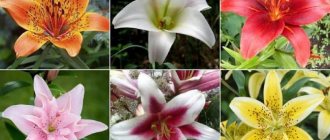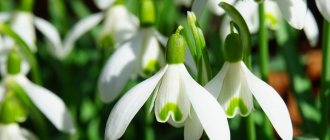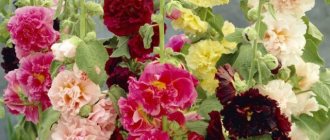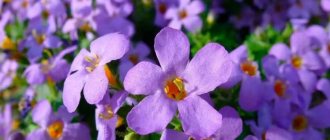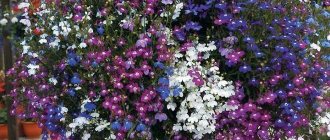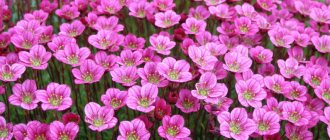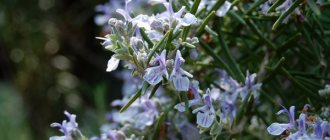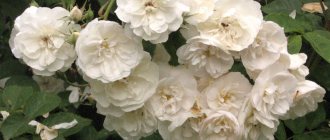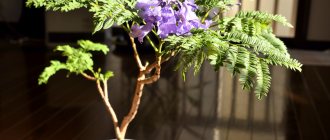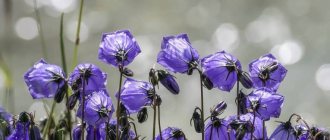What do frying flowers look like?
Zharok is a perennial compact bush 60-80 cm high. Erect leafy stems end in 1-2 large (diameter up to 5 cm) spherical flowers. Bright orange petals shine as if varnished. Attached to the base of the stem are petiolate, palmately dissected leaves of a rich green hue.
Interesting materials:
Where are screenshots saved from Nvidia? Where are Thark screenshots saved? Where are GeForce Experience videos saved? Where to save fonts in Photoshop? Where to sleep with your head according to the cardinal directions? Where to write off accounts receivable? Where should I put the diffuser? Where to put the oven? Where to put the cache on Android? Where to give injections to pigs?
First flowers of spring
Snowdrop (Galanthus) The English call it a snowdrop, the Germans call it a bell, but we call it a snowdrop. Real snowdrops , as previously believed, look like drops of milk hanging down. This is where the Latin name Galanthus comes from, meaning milky white flower.
Galanthus emerge from under the snow in February and bloom for about a month, tolerate temperature changes well and are not afraid of spring frosts. Their flowers are a symbol of spring, purity and hopes for a bright future.
An ancient legend says that snowdrops first became the embodiment of hope for Adam and Eve when they were expelled from the Garden of Eden. Eve thought that the cold winter would never end, but then an angel appeared and turned snowflakes into blooming snowdrops, giving her hope for the coming of spring and warmth. Scilla Many people confuse snowdrops with scillas, calling the latter blue snowdrops, although we are talking about completely different flowers from a botanical point of view. People believe that if you find a blueberry on Annunciation or Easter, you should put it under the icons for good luck.
In the forests of the European part of Russia, you can most often find two types of woodles: Siberian and two-leaved. Scilla flowers are usually blue, but pink, white, and purple are also found.
© Depositphotos Anemone, or anemone (Anemone) Amazing with its grace and fragility, the anemone is one of the first heralds of spring. As soon as the snow melts, these lovely delicate flowers cover the area under the forest canopy with a continuous white carpet. The delicate petals sway with the slightest breath of wind, hence the name “anemone”.
In the North-West of Russia, it is the anemone that is most often called snowdrop. This plant is under state protection and is listed in the Red Book of Moscow, Belgorod, Bryansk, Vladimir, Vologda and other regions. Whiteflower (Leucojum) There are a lot of plants in nature, which sometimes only a specialist can distinguish. One of these pairs is white flower and snowdrop. And indeed, both have small snow-white flowers, and they bloom almost simultaneously, at the beginning of spring, sometimes appearing directly from under the snow.
One might suspect that the whiteflower is a type of snowdrop. But no, these are two completely different plants, although both are bulbous. White flowers, unlike the queen’s favorites from “12 Months,” can decorate your garden not only at the beginning of spring. There are summer and even autumn varieties.
Galanthus care
Proper care of galanthus ensures long flowering and healthy appearance of plants:
- The place where galanthus is planted must be well lit; it does not tolerate darkening. It's good if it's a small open hill;
- Fertilizing can be done with mineral fertilizers (in liquid form) and organic. Nitrogen fertilizers are applied in doses, since with their excess the plant increases its green mass;
- Watering – preferably naturally. A lot of moisture is needed, but you need to make sure that the water does not stagnate in the soil;
- There is no need for winter insulation; the snowdrop is quite winter-hardy;
- Transplantation is carried out once every 5 years. Replanting activities are carried out when the upper green part completely dies off with the change of seasons. At the same time, the children are separated and they are planted.
Suitable site for planting on a hill
Galanthus transplant
Snowdrop: care at home and outdoors
There are 75 species and varieties of the snowdrop plant. Only two species are cultivated. The first is Galanthus nivalis, known as the Garden Snowdrop. The snowdrop looks like three drops of milk hanging from a stem.
This explains the Latin name Galanthus, which means milky white flowers. These snowdrop bulbs are native to Europe and Asia Minor.
We also wrote about other small-bulbous plants. We advise you to look at the article Small-bulbous: description of species.
Nickname – “snowdrop”. What flowers are hidden under one name?
In Russian tradition, all first spring flowers are usually called snowdrops. Although from a botanical point of view only Galanthus is considered a true snowdrop, in different regions of our country a variety of plants from completely different botanical families are known under this proud and lovely name.
Snowdrops in Russia are most often called anemones, or anemones (Anemone), liverworts (Hepatica), lumbago (Pulsatilla), scillas (Scilla), cyclamens (Cyclamen) and hellebores (Helleborus). Almost all of these plants are protected by law, as they are often the subject of mass harvest for commercial purposes, and in addition, they are greatly affected by climate change and forest loss.
In the forests of the European part of Russia, you can most often find two types of woodles: Siberian and two-leaved. Sibirskaya is the “blue snowdrop” familiar to many. It is very unpretentious and reproduces well by children and seeds, which are carried around by ants. As a result, this plant forms magnificent blue carpets.
Shoots (sleep-grass)
Large and noticeable flowers of lumbago in the forest have always attracted people's attention. Alas, in the vicinity of large cities these plants have practically disappeared. Few people will believe it, but half a century ago, lumbago decorated the spring forests of Serebryany Bor, Kuzminki and Razdorov in the near Moscow region. Now these populations are completely exterminated. But these plants tolerate digging and replanting very poorly. It is much preferable to propagate lumbago by seeds, which must be sown immediately after harvesting. They would preserve nature and enrich the gardens. In the meantime, gardeners are buying lumbago produced in Poland and Holland. Sleep grass is known for several, sometimes not very similar, species. The color of their flowers can be white, yellow, red, blue, cyan and purple-black.
Method of growing anemone
There are about 170 different species of anemone. Let's look at how to grow wood anemone.
Roots dug up in the forest must be placed in damp sand or peat for a period of 3 to 5 days so that they “drink.”
Then plant the bulbs shallowly in a small (12-15 cm in diameter) pot. The soil in the pot should be a good greenhouse with the addition of sand in a ratio of 2:1.
Wrap the pot in several layers of rags and place it in a frost-free room. In order for the anemone to bloom by the New Year, the pot should be moved to a warm place no later than the beginning of November.
Garden varieties of anemone are grown in the same way.
The most beautiful snowdrops in the world: types, PHOTO
Snowdrop is a fragile miniature plant from the Amaryllis family, which has long been considered the very first harbinger of spring. Its other name is galanthus, which means “milk flower” and is associated with the snow-white milky color of the petals. The main name is explained by the fact that the first snowdrops break through from under the snow cover.
Main types
In total, there are about 20 species of snowdrops, 12 of them grow in the countries of the former Union. Sometimes their varieties mistakenly mean flowers similar to snowdrops: scillas, anemones and other spring herbaceous plants. Galanthus are distributed throughout most of Europe and Asia Minor, but the maximum variety grows in the Caucasus.
Planting rules and recommendations
There are several rules for planting galanthus that must be followed if you want to get beautiful and healthy plants:
- Bulbs are planted between July and September. In case of warm weather and absence of prolonged rains, these time frames shift to October;
- The bulbs are deepened without leaving the tips on the surface;
- It is best to plant bulbs in small groups (galanthus likes crowding) of several bulbs, leaving a distance of 3 cm between individual planting specimens;
- You can store bulbs for planting in unprotected conditions for no more than a month. In the open air they lose moisture and can deteriorate. If long-term storage is needed, then it is carried out in a cool, dark place - in sawdust or slightly damp moss or peat mixture. Such storage is possible for 3 months;
- The soil is prepared in advance: it must be loose, well permeable, so that moisture does not stagnate and acidify. Before planting, add sand and humus for fertilizer, make sure that the pH of the soil remains neutral;
- Planting of seeds is carried out immediately into the soil after ripening, in rows or groups, leaving 2-3 cm between individual seeds.
They are called snowdrops.
The first spring arrival at the dacha is always a long-awaited holiday. Any keen florist will easily remember this wonderful excitement, tremblingly covering you from head to toe and dousing you with the intoxicating smell of thawed earth and the tart aroma of unfolding greenery. The aftertaste of winter finally recedes at the sight of the most delicate early spring ephemeroids in the awakening garden.
Galanthus nivalis
The word “ephemeral” connotes something beautiful, but fleeting and short-lived. Indeed, a week or two after birth, transient plants will already fade. Despite the spring coolness, the extraordinary “haste” of these flowers always surprises and upsets me, but is it possible to refuse this miracle of awakening the garden, which sets you up for a lyrical and enthusiastic exclamation: “Stop, moment, you are beautiful!”
Galanthus, iridodictiums, chionodoxes, scylla, crocuses, erythroniums, hellebores and other ephemeral and early spring perennials are primrose plants. They are often referred to colloquially as snowdrops, a name given to many spring flowers.
Galanthus
Many people associate the canonical image of the main snowdrop with galanthus . The unopened flower of this touching plant resembles a thick drop of milk. Indeed, the translation of the name from Greek means: “gala” - milk and “anthus” - flower.
An unopened galanthus flower resembles a milk drop
Galanthus have been cultivated in gardens since time immemorial; there are many different variations and forms of this primrose, including double ones.
“The main snowdrop” is galanthus. Galanthus 'Flore Pleno'
2. Snowdrops care at home
2.1. Temperature conditions
During the dormant period, which lasts about 4 months, the bulbs are stored for several months in a cool, dry and dark place with a temperature of about 5 ° C. After planting, the temperature is gradually increased to 12 - 15 ° C. At higher temperatures, flowering may not occur.
2.2.Lighting for home snowdrops
After planting, the pots are placed in a well-lit place without direct sunlight. With the appearance of flower stalks, snowdrops can be moved to partial shade. If there is a lack of sunlight, plants can be supplemented with fluorescent lamps.
2.3.Care
Snowdrop is very popular among gardeners as a reliable forcing plant. It can hardly be considered an indoor flower, since after forcing the bulbs should be planted outside - they will not bloom again at home. The snowdrop, with proper care, can bloom at any desired time of the year - for example, on March 8th. For forcing, only the largest and healthiest-looking bulbs are selected, disinfected in a weak solution of potassium permanganate and planted in nutritious, moist soil. For better rooting, the bulbs are kept in the ground for some time at a temperature of about 5°C. It usually takes 1.5 months from planting to flowering, so a month before the desired flowering, the container with the plants is transferred to a warm place with a temperature of about 18 - 24 ° C and kept there until the buds appear. It is worth remembering that to extend the flowering time, plants should be kept cool - at a temperature of 10-15°C.
After flowering, the leaves will turn yellow and dry out - do not remove them, they continue to nourish the bulb. Galanthus does not like sudden changes in temperature.
2.4.Substrate
Loose soil consisting of peat, humus, garden soil and sand.
2.5.Feeding
With the appearance of sprouts, fertilizing with complex fertilizers begins. 2 - 3 feedings per season are enough.
2.6.Purpose
Valuable forcing plant. Snowdrops planted in October will bloom in January.
2.7.When snowdrops bloom
The specific flowering period depends on the variety and the beginning of forcing.
2.8.Air humidity
High, use a room humidifier or a tray filled with wet pebbles to increase humidity. Spraying is best done in the morning. Snowdrops need good air circulation.
2.9.Soil moisture
During the growing season, keep the soil evenly moist but not soggy. Drain excess water accumulated in the tray a few minutes after watering. After flowering, the frequency of watering is gradually reduced.
2.10.Transfer
Does not require replanting; the bulbs are planted in open ground after flowering.
Liverworts
These plants got their name from their leaves, which are shaped like the image of a liver in medieval treatises. There is a widespread misconception that they were once used to treat diseases of this internal organ, which never happened.
The noble liverwort is found in the European part of Russia, and the Asian liverwort is found in the Far East. Now these plants are truly wildly popular. Collectors are chasing the latest and most expensive varieties, forgetting that the simplest liverwort from the Russian forest is just as charming and touching as its foreign relatives. Where liverworts grow en masse, you can find forms with white, pink, purple and double flowers. By planting several varieties in the garden that will cross-pollinate, over time you will be able to observe the appearance of new colors in the liverworts, since they reproduce well by seeds.
Primrose (primrose)
This is one of the most beloved plants in Russian folklore. Little rams, little keys – whatever they call it! The last name has a deep meaning. Indeed, in the countries of Northern Europe, since ancient times it was believed that the keys to spring, hanging on the belt of the goddess of the same name, were shaped like the flowers of these very plants! Almost everyone knows the common forest primrose, but, unfortunately, it is extremely rarely used in the design of their gardens. But this is a magnificent, unpretentious and durable plant, easily grown from seeds.
Kaluzhnitsy got its name from the old Russian word “kaluga”, which meant a roadside pit with water. They actually grow in water, preferring meltwater streams and small forest streams. But few people know that if they are provided with water, marigolds do well under the canopy of large trees on rich soils. These are wonderful shade plants. In gardens, they can often be seen in small decorative ponds. On sale you can find double and white forms of marsh marigold.
Video about growing and caring for galanthus in the garden
This video describes in detail how to grow galanthus in the garden, how to care for it and how to choose planting material. We recommend viewing!
Snowdrop is the ideal solution for those who want to admire blooming primroses and fresh greenery in the very early spring. It does not freeze in light, late frosts, and prolonged and prolonged cold only increases the period of its flowering. We wish you a pleasant and fruitful pastime while caring for and observing galanthus in your garden!
Description of the plant
Snowdrops are early spring flowering bulbs. Each bulb produces two or three stripe-shaped leaves of a dark green color. The white flowers tend to grow singly in early spring, but sometimes in mid to late winter. Three green-tipped inner petals overlap the outer petals to form a tube.
Crimean species, Galanthus plicatus, giant snowdrop and Galanthus elwesii are the most popular species.
These species do not even wait for the snow to melt before germinating and blooming.
Spreading
Snowdrops hybridize easily and therefore do not germinate from seeds without suitable conditions.
Snowdrops are a flexible, fast-flowering garden plant that will grow even in snow. This characteristic is reflected in the name of the flower. It takes a year for the bulbs to take root. So even if the first year after planting is disappointing, expect better results next year.
New classification of snowdrops
Considering the almost complete external similarity of primrose varieties to each other and problems in taxonomy, at the moment plants are usually divided into several groups.
- Imperial.
- Spotted.
- Terry.
- Green.
How to grow snowdrops that are highly resistant to low temperatures is the main question for this classification. It is impossible to determine the frost resistance of a variety. To do this, it is necessary to find out the genealogy of a particular plant. However, most breeders and nurseries still indicate the species epithet.
How to plant snowdrops in the country
Snowdrops are listed in the Red Book and are under state protection, but growing them on your own plot is not particularly difficult. The first spring flowers reproduce by fairly small (up to 3 centimeters in diameter) bulbs covered with yellowish scales.
They prefer soil that is moist and rich in minerals. For good plant growth, the soil must be non-flooded, since due to excess moisture in the soil, galanthus may die.
You should not dig up galanthus in the forest or forested areas, because it is precisely because of the barbaric attitude towards these first spring flowers that they are recognized as an endangered species. It is best to go to a specialized plant store and purchase snowdrop bulbs there.
Despite warnings from environmentalists and administrative responsibility, some people annually pick snowdrops to sell, while others buy them, often bringing them home hopelessly wilted. We'll tell you why you shouldn't pick, buy, or accept primroses as gifts.
For residents of private houses and owners of summer cottages, spring is a special time when you can implement the most daring ideas on your site, turning the world around into a magical garden, lush flower garden or unusual park. Our editors have prepared for you a selection of the most beautiful ideas for decorating spring flower beds.
You may be surprised, but in many countries, ordinary dandelions are called yellow ginseng, because it turns out that they have no less beneficial properties than the real root of life.
